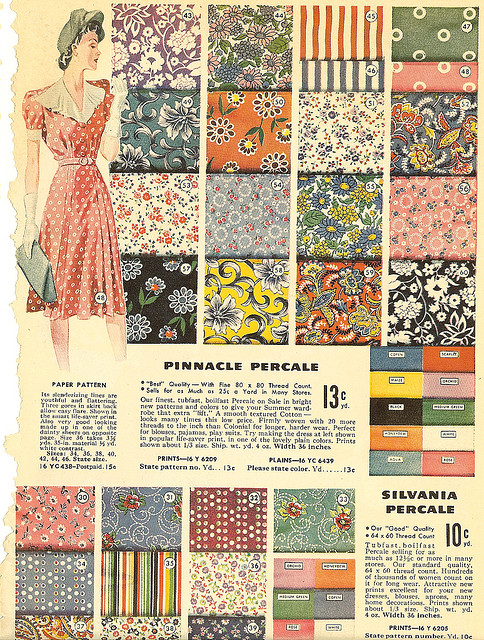We thought it would be helpful to put together a little list of fabric terms. You’ve probably heard these words before and may even know all of them. If so, consider this a little refresher!
Fabric Terms and Descriptions
Drape refers to the way a fabric hangs away from the body. For example, silk chiffon has flowing drape that seems to almost stick to itself. Compare this to silk organza which is also thin yet it has a stiff drape and sticks away from itself.
Fashion fabric is specifically a home sewing term. It’s used to only describe the fabric used for the outer portion of your garment, so you wouldn’t call lining fashion fabric.
Grain is one of the most important aspects of fabric. A grain line runs parallel to the selvage. Grain lines are marked on pattern pieces so that they can be aligned with the fabric’s grain. Cutting fabric on grain allows your final garment to drape correctly. The cross grain runs perpendicular to the selvage. Many garments are also cut on the bias. The bias runs 45 degrees across the grain and is very stretchy.
Hand simply describes the way fabric feels. Boucle has a bumpy hand whereas sueded silk has a soft hand.
Knit fabric is knitted on complex machines. The fabric is usually quite stretchy and comes in a wide variety of materials.
Lining refers to the fabric used exclusively on the inside of a garment. All garments can be lined but the most common are skirts, jackets, coats and dresses.
Nap and pile are interchangeable terms describing the same thing. Velvet and corduroy are two fabrics with a slightly fuzzy pile. If you run your hand across the fabric, you can see that the pile changes direction. It’s very important that the direction of the nap be the same every time you cut out a piece of fabric. This ensures that your garment will look uniform.
The right side of the fabric refers to the side of the fabric which is intended for the outer side of the garment. The wrong side is the opposite. However, some fabrics are indistinguishable on both sides and so there is no wrong side.
Self fabric is a professional sewing term that means the same thing as fashion fabric.
Selvage is the edge of the fabric that runs parallel to the grain line. Usually the selvage won’t fray and is marked with information from the manufacturer.
Warp refers to the threads of a woven garment that are parallel to the selvage. It’s the same as the grain line.
Weft refers to the threads of a woven garment that are perpendicular to the selvage. It’s the same as the cross grain.
Woven fabrics come in many different styles and are created on looms. They have a warp and weft. In general, woven fabrics don’t stretch unless they contain a material that stretches, such as lycra.
Let us know down in the comments if we missed anything!


Comments
Post a Comment